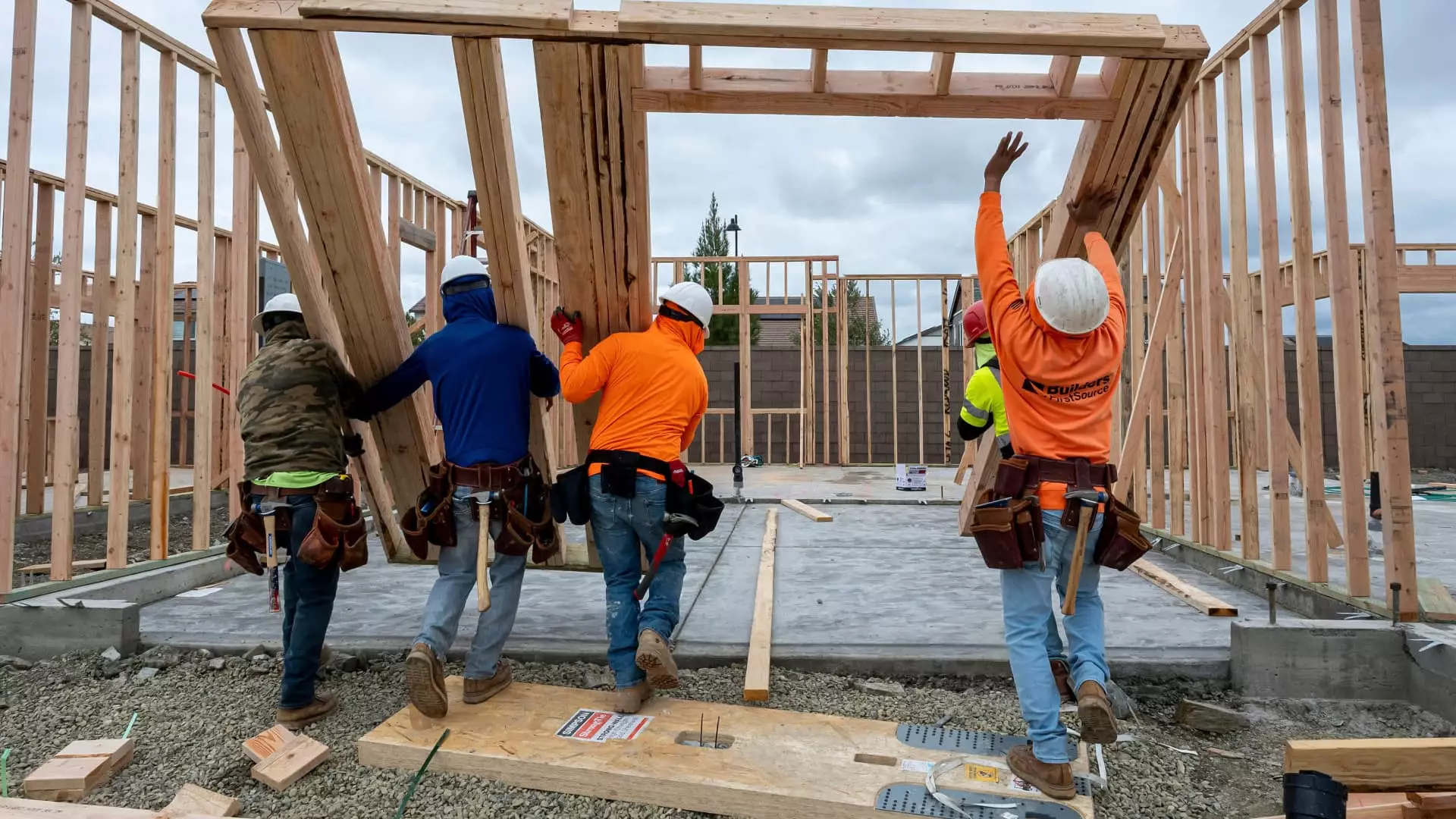The current climate of the U.S. housing market reflects a grim scenario for homebuilders and potential buyers alike. With higher mortgage rates serving as an effective barrier to entry for many hopeful homeowners, the sentiment among builders is plummeting. The recent report from the National Association of Home Builders (NAHB)/Wells Fargo Housing Market Index (HMI) revealed that builder confidence dipped to a concerning 32 in June, marking a severe downturn. Any reading below 50 indicates negative sentiment, highlighting a significant issue within the housing sector. This decline is not just a bump in the road; it’s a reflective commentary on the broader economic uncertainties that loom over the market, with many builders echoing a sense of defeat.
When examining the components of the index, the specifics tell a troubling story. Notably, current sales conditions and buyer traffic fell sharply, bringing to light the beleaguered state of buyer engagement. The disquiet is palpable, with many builders reporting a pronounced drop in traffic, the lowest since the conclusion of 2023. The responsiveness of consumers to the market conditions underscores the growing trend of potential buyers retreating from the purchasing arena, leading to a catastrophic slowdown in the sector.
The Price-Cutting Strategy
In light of these challenges, builders are taking drastic steps to rekindle interest from buyers. About 37% of builders confess to slashing prices, the highest rate recorded since tracking began. This price-cutting may appear as a stabilizing force, but it reveals a deeper malaise affecting the housing market. The average reduction of 5% remains steady since last year, serving as a signal that optimism in the sector is fading. The desperate measures taken by these builders unveil the sobering reality that many are more focused on moving inventory rather than accommodating market demand.
The NAHB’s chief economist, Robert Dietz, provides important insights into the state of the market, stating that rising inventory and a reluctance from buyers are stalling price growth in many locales. The environment cultivated by rising mortgage rates has stifled consumer confidence, forcing many would-be homeowners to remain on the sidelines. This persistent feeling of uncertainty presents an alarming trend as potential buyers are left hoping for an improvement in affordability that may not materialize anytime soon.
The Unfolding Market Landscape
Against this backdrop, the guidance provided by some of the largest homebuilders, such as Lennar, reflects a cautious approach to future growth. With average home prices drooping nearly 9% year-over-year amidst rising mortgage rates, it is a stark reminder of how quickly market dynamics can shift. The challenges are exacerbated as consumer confidence weakens further, causing builders to incentivize sales to counteract the drop-off in demand.
Regionally, the ramifications of this sentiment are particularly noticeable in the South and West, where most new developments are taking place. If the sentiment is weak in these primary construction locales, what does that spell for future housing availability and affordability? Builders must navigate murky waters as they attempt to sustain operations amidst an environment riddled with economic uncertainty.
A Call for Balanced Economic Strategies
What perhaps stands out in this analysis is the urgent need for a more enlightened approach from policymakers that balances economic growth with affordability concerns. The current predicament underscores a vital crossroads in housing policy. As a society, we need to recognize that stabilizing the housing market must include addressing the economic pressures faced by both homebuilders and buyers alike. The onus falls on regulators and politicians to explore adaptable solutions that can ameliorate these economic strains, fostering an atmosphere conducive to renewed growth.
The ongoing volatility emphasizes a center-right perspective: We must advocate for policies that enhance market stability, lessen taxation on builders, and perhaps even reconsider some tariff discussions that inhibit growth. The goal should not just be to increase homeownership but to ensure that the very paths to obtaining that ownership are viable and accessible to those who strive for it. The solutions to these dilemmas require proactive and thoughtful engagement to prevent a long-term downturn in a sector that is foundational to the economy. The call to action is clear—now is the time to devise a robust strategy that serves as a beacon of hope for the housing market’s future.

